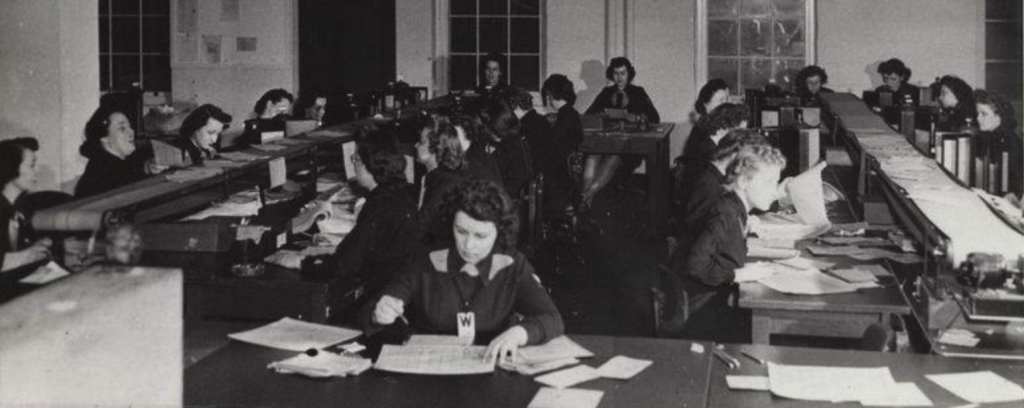By now, you’ve hopefully seen the super-successful, super-awesome movie Hidden Figures (or read the book), which chronicles the amazing work of black female ‘computers’ (people who did calculations), working for NASA before and during the space race.
These little known computers, like Katherine Johnson, were absolutely fundamental to putting American men on the moon.

Photo Credit: Fox Movies
Because history has almost always been told by the victors and rulers, the stories of these women who made such a difference have long been shuffled into the background and left to gather dust.
And as time marches on and the stories lay undiscovered, they are in danger of being lost forever.

Photo Credit: Wikipedia
Which is why books like Hidden Figures – and the one I’m about to tell you about – that reveal the success stories of disadvantaged women working within a stacked patriarchal system have the potential to change the way women and girls today view their own futures.

Photo Credit: Fox Movies
Code Girls: The Untold Story of the American Women Codebreakers of World War II was written by journalist Liza Mundy and digs into the largely unknown history of American collegiate women and schoolteachers who were recruited by the Navy and Army during World War II.
https://www.instagram.com/p/BbCdF7anZrM
Women who were educated and had experience working with mathematics were asked by professors, college presidents, and military officers whether they were interested in – and suitable for – secret codebreaking work on both German and Japanese transmissions.
More than 10,000 women answered yes and were brought on board to fill spots at home while men deployed overseas – especially if they were unmarried. Those women weren’t just taking space until the men came back, as some history books would have us believe – they were the backbone of this country’s intelligence infrastructure, and their work was pivotal to our defeating the Japanese armies in the Pacific and Nazi submarines in the Atlantic.
In short, their dedication, diligence, and intelligence shortened the war and saved countless lives.
The influence of these women on WWII began long before the rise of the Nazi party, with a woman named Agnes Driscoll. All the way back in the 1920s she was already working on diagnosing and re-diagnosing Japanese fleet code, and without her groundbreaking work the U.S. military would have gone into WWII blind to Japanese naval communications. Once the war broke out, she taught male officers everything she learned and, sadly, faded into obscurity – until now.
American (and also British) women entering the war effort made a huge difference to the Allied ability to win the war, and to win it as quickly as possible. Putting women to work in positions of military influence wasn’t a well the Axis powers drew on, and it’s very possible that their shortsighted misogyny cost them victory.
Women broke codes that allowed the military to pinpoint where the Japanese army was, where they were likely headed, where radio signals were coming from and going to, and even an “order of battle” (location and movement of troops). These were key pieces of intelligence that were compiled and transmitted to the Pentagon and the generals every single day – not desk work, not paper pushing, but tasks that had real impact on life at the fronts.
The women who shone in these positions weren’t content to finish the work and go home, either. It’s clear from memoirs like Virginia Gildersleeve’s – a dean at Barnard College – that the larger implications of recruitment weren’t lost on the women of the day. Before the war, colleges did teach women math and science, but because jobs were limited after graduation, so was the number of women trained in those fields. During the war, some colleges remained reluctant to expand their programs for women, feeling as if maths jobs would be yanked away after the men returned home, but women like Virginia were intent on persuading institutions like MIT and Columbia to allow more of their graduate maths and science acceptances to go to women. Codebreaking and military recruitment didn’t just provide temporary opportunities, in their eyes. They provided a way to change the roles of women in the future.

Photo Credit: Wikipedia
The book also discusses how motherhood largely exempted women from the naval jobs (it was more acceptable in the civilian Army unit) and how the Army employed African-American women in their own segregated unit. The Navy only wanted white, non-Jewish women with no strong or immediate ties to occupied European countries. Mundy mentions that there is very little information to be found about the women in the African-American unit, but with the strong (segregated) Washington D.C. school system and the proximity of Howard University, there would have been a significant pool of educated, smart, driven women to recruit from.
Though none of them are interviewed for her book, she hopes that upon publication there will be “an African-American family who says ‘you know, our mother did this work and here are some of her letters’ or some other documents will come forward that will allow us to piece together some more of the story and fill out the contributions specifically of the African-American codebreakers during the war.”
If you enjoyed learning about NASA’s hidden figures, then the personal stories of the female Army and Navy WWII codebreakers will be right up your alley.
And even for those who don’t choose to pick up the book, the simple knowledge that women have been far more integral to the success of this nation than we learn in history class – on pretty much every level, too – is sure to shape the way girls and women think about their ability to contribute in the future.






